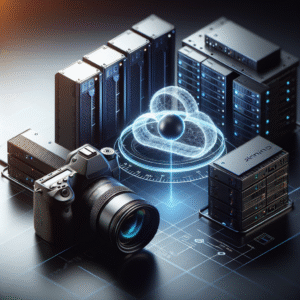Have you ever thought about how technology is transforming our urban environments into smart cities? The way we live, work, and interact is being reshaped by innovative technologies that promise efficiency, sustainability, and improved quality of life. In this article, I’m excited to discuss the profound impact of technology on smart cities, explaining how these advancements work and why they matter.
What is a Smart City?
A smart city leverages technology and data to enhance urban services, optimize resource use, and improve the overall quality of life for its residents. It involves the integration of various technological applications aimed at addressing the challenges that modern cities face, such as traffic congestion, waste management, and energy consumption. At the heart of a smart city are interconnected systems and the Internet of Things (IoT), which allow for real-time data collection and analysis.
Key Characteristics of Smart Cities
The features of smart cities vary, but overall, they share some common characteristics:
-
Intelligent Infrastructure: Smart buildings and transportation systems that utilize sensor technologies to monitor and optimize operations.
-
Data-Driven Decision Making: Utilizing data analytics to adapt resources and services to the needs of the population.
-
Sustainability: Focus on renewable energy sources and efficient use of resources to reduce environmental impact.
-
Citizen Engagement: Providing platforms for residents to interact with the city and contribute feedback on urban services.
-
Enhanced Mobility: Implementing smart transportation systems, including smart traffic lights and integrated public transport, to improve commute times.
The Role of IoT in Smart Cities
The Internet of Things (IoT) plays a crucial role in the operation of smart cities. IoT devices are embedded with sensors and software that allow them to communicate and exchange data. These devices, when interconnected, provide valuable insights that help city planners make informed decisions.
Examples of IoT Applications
| Application | Description |
|---|---|
| Smart Traffic Lights | Adjust based on real-time traffic flow to minimize congestion. |
| Waste Management | Smart bins that signal when they need to be emptied. |
| Energy Monitoring | Sensors that track energy use in real-time. |
| Environmental Monitoring | Sensors to measure air quality and noise levels. |
I find it fascinating to see how cities can become more responsive to inhabitants’ needs through these technologies. By collecting and analyzing data, cities can anticipate problems before they arise, leading to a more proactive approach in urban management.
Economic Impact of Smart Cities
The transformation into a smart city is not just about technology; it has significant economic implications as well. It creates new job opportunities, increases efficiencies, and can even boost local economies.
Job Creation and Skills Development
The demand for skilled workers in various fields such as data analysis, IT services, and urban planning has increased dramatically as cities adopt smart technologies. This shift requires educational institutions to adapt curricula and create training programs that equip individuals with the skills needed in a tech-driven job market.
Attracting Investment
Investing in smart city technologies can make locations more appealing to businesses. Companies are often drawn to areas that provide efficient public services and infrastructure. This attraction can lead to increased local and foreign investments, stimulating economic growth and development.
Efficiency and Cost Savings
Smart cities are about improving efficiencies in resource usage, which can translate into significant cost savings for local governments. For example, smart energy grids that optimize electricity use help reduce waste and lower energy bills.
Real-World Examples
Cities like Singapore and Barcelona serve as great examples of how smart city initiatives can drive economic development. Singapore has implemented a comprehensive urban planning strategy that incorporates smart technologies for everything from housing to transportation, making it a global leader in smart city innovation. Barcelona, on the other hand, has introduced smart waste management systems that have dramatically increased recycling rates while decreasing collection costs.
Challenges to Economic Growth
While the economic possibilities are exciting, there are barriers to overcoming. Initial investment costs can be high, and infrastructure upgrades can take time. There may be resistance to change, especially among communities averse to new technologies, which requires a thoughtful approach to ensure that the transition is smooth and inclusive.
Social Impact of Smart Cities
The social implications of smart cities are profound. Technological advancements can significantly enhance the quality of life for residents, leading to better health outcomes, increased community engagement, and improved public safety.
Improved Public Health
Smart technologies can significantly improve public health by providing real-time data for monitoring various health metrics. For instance, air quality sensors can alert residents about pollution levels, helping them take precautions when necessary.
Health Monitoring Examples
| Technology | Purpose |
|---|---|
| Wearable Devices | Track personal health metrics. |
| Telehealth Services | Provide remote healthcare access. |
| Environmental Sensors | Monitor air and water quality. |
By utilizing data accurately, cities can implement necessary public health measures more effectively, ensuring a healthier population.
Enhanced Safety and Security
With the integration of smart surveillance systems, cities can better monitor public spaces, leading to improved safety. Real-time data analysis allows law enforcement agencies to respond more swiftly and effectively to incidents.
Community Interaction and Engagement
Smart cities can foster better engagement between residents and local governments. Platforms for feedback and suggestions allow citizens to voice concerns directly, ensuring their needs are heard and addressed effectively.
Environmental Sustainability in Smart Cities
As urban populations continue to grow, the environmental impacts of city living become more pronounced. Smart cities aim to address these challenges by promoting sustainability through technology.
Energy Efficiency Strategies
One of the ways smart cities promote sustainability is through intelligent energy management systems. By utilizing renewable energy sources and improving energy efficiency in buildings, cities can significantly reduce their carbon footprints.
Strategies for Reducing Energy Consumption
| Strategy | Description |
|---|---|
| Smart Grids | Optimize electricity distribution and usage. |
| Energy-Efficient Buildings | Use sustainable materials and designs. |
| Electric Vehicle Charging Stations | Encourage the use of electric vehicles. |
Waste Management Innovations
Smart waste management systems help cities tackle waste more efficiently. By using sensors to monitor waste levels in real-time, cities can optimize collection routes and schedules, saving time and resources.
Water Conservation Efforts
Efficient water management is crucial for sustainability. Smart irrigation systems using weather data can ensure that watering occurs only when necessary, conserving water resources in urban settings.
The Future of Smart Cities
The future of smart cities is full of promise, with ongoing advancements in technology likely to reshape our urban environments further.
Advancements in Artificial Intelligence
Artificial intelligence (AI) will play a significant role in the continued evolution of smart cities. AI can analyze vast amounts of data from IoT devices, providing insights that can enhance decision-making and operational efficiencies in real time.
Expansion of 5G Technology
The rollout of 5G networks will enable smarter cities to gather and transmit data faster than ever before. This increased connectivity will foster even more innovative applications and services, enhancing the overall urban experience.
Government Role in Smart City Development
Governments will need to adopt supportive policies and frameworks to facilitate the growth of smart cities. This includes investing in infrastructure, providing incentives to adopt technology, and ensuring that governance structures are in place to oversee and manage these initiatives effectively.
Inclusion and Accessibility
As we build smarter cities, it’s essential to ensure that all residents, regardless of socioeconomic status or physical ability, can access the benefits of these technologies. Inclusivity must be a core component of smart city planning to prevent widening existing inequalities.
In conclusion, the impact of technology on smart cities can be seen across various aspects, from economic prosperity to social well-being and environmental sustainability. The transformation of urban areas into smart cities is not just a technological shift; it represents a new way of thinking about community, sustainability, and resilience in the face of continual urbanization. The journey toward becoming a smart city may be complex and challenging, but the potential rewards are immense. The future promises smarter, more efficient, and livable communities — a vision worth striving for.
As I look forward, I can only imagine how exciting it will be to witness the progress and innovation that will unfold in our cities, making them not just smarter but also more inclusive and humane places for all residents.






